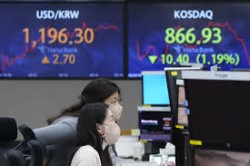Almost every asset class in the world has been hit by Russia’s invasion of Ukraine. Stocks and other high-risk investments are in free fall. Treasuries and gold, two well-known safe havens, are appreciating. U.S. inflation, at a four-year high, has pushed oil and other basic commodities to new highs.
Analysts believe that despite the potentially devastating and disorienting effects of Europe's largest armed fighting since World War II, investors should remain calm and continue investing as usual.
Please don't panic.

Selling in a falling market (the S&P 500 is now officially in correction territory) is the exact opposite of what successful investors do. Remember, the goal is to shop cheap.
No one understands what a Russian invasion of Ukraine means for oil prices, monetary policy, and everything in between.
Also, historically, markets tend to recover quickly after being affected by global instability.
Russia-Ukraine impact on the overall market
Geopolitics disrupting markets is nothing new. The most dramatic reactions are normal in the early days following a geopolitical event. The effects usually last one to three months.
On top of that, markets typically rise within a year of major events such as the financial crisis we are witnessing today.
Markets have a history of resilience even in turbulent times, said Ryan Detrick, senior market strategist at LPL Financial.
As scary as a major confrontation between Russia and Ukraine may be, the reality is that the stock market will likely be able to weather the geopolitical battle.
However, stocks tend to be more forgiving when the economy isn't in crisis.
However, that doesn't mean Wall Street won't experience major disruption anytime soon.
The oil industry is the star of the show

Commodity markets are affected by the current crisis. Brent crude futures topped $100 a barrel for the first time in global markets since 2014. With gasoline prices expected to rise above $4 a gallon by the end of the year, consumers are likely to pay more when filling up.
However, it is important to remember that $100 per barrel is a small amount of money. For crude oil prices to rise to 2014 levels after accounting for inflation, it would have to hit $120 a barrel. The last time the U.S. shale industry poured more than $500 billion into boosting production, crude prices tumbled.
Capital discipline has become a watchword for U.S. shale companies to avoid repeating the mistakes of eight years ago. How long oil companies will wait for new investment is anyone's guess, but the oil cycle has been and will continue to be. Many believe that higher prices will alleviate the problem of rising costs.
Concerns about rising inflation have grown sharply.
Inflationary pressures are rising due to other resource extraction activities. Russia and Ukraine together account for 20% of global corn exports and 25% of global wheat exports, pushing up prices for several agricultural commodities.
It's worth noting, however, that some economists are divided on whether these geopolitical and inflationary factors are what investors see as automatic economic killers.